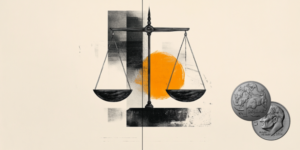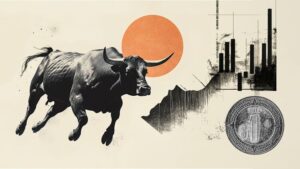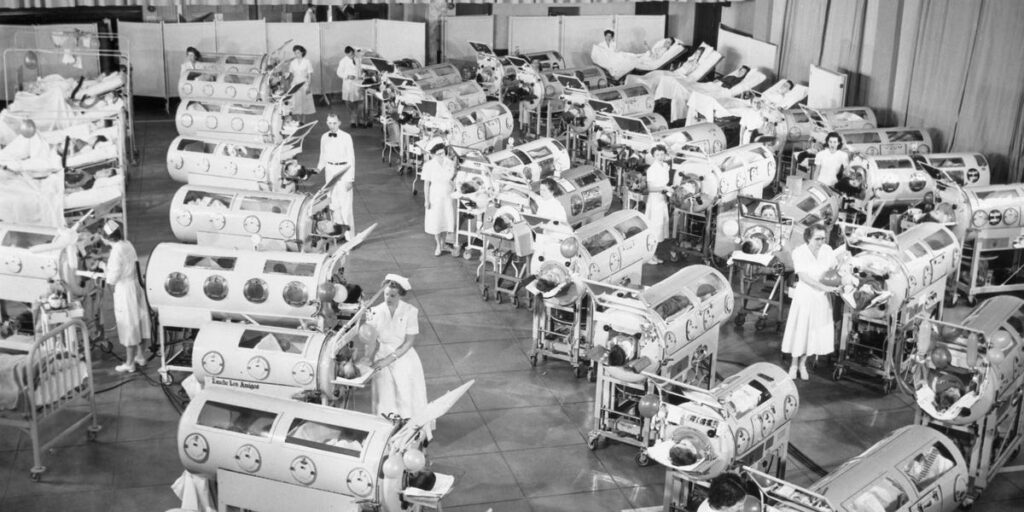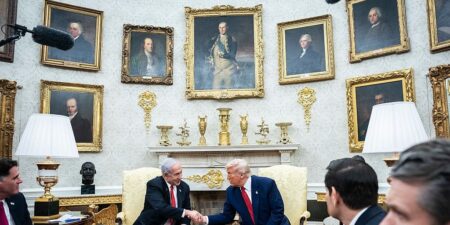Updated
subscribers. Become an Insider
and start reading now.
Have an account? .
- On April 12, 1955, researchers announced the first polio vaccine, which was instantly approved.
- Before vaccines were available, polio caused 15,000 cases of paralysis in the US each year.
- The US eliminated the disease in 1979, but it hasn’t been fully eradicated worldwide.
“Safe, effective, and potent.”
That’s how Thomas Francis Jr. of the University of Michigan School of Public Health announced the arrival of Jonas Salk’s polio vaccine on April 12, 1955, to a stunned and grateful public.
“People compared it to VE Day and VJ Day, the amount of instant joy, celebration,” Jerry Joyce, president of the Salk Institute for Biological Studies, told Business Insider.
Seventy years ago, newspapers dusted off their largest typefaces, not used since World War II, to cover the medical breakthrough. Less than a week later, a mass vaccine campaign kicked into gear.
It worked. The vaccines helped eliminate the disease from the US in 1979.
Before then, in the 1950s specifically, cases of poliovirus ran rampant in the US. Hospitals overflowed with disabled or severely ill patients, according to the National Library of Medicine.
During the outbreak’s peak in 1952, polio infections caused 20,000 cases of paralysis. Families isolated in fear because of how easily it spreads among kids.
Doctors warn that pausing polio vaccinations could help the disease regain its foothold.
Photos show what happened during polio outbreaks in the US and how the vaccine was developed.
A virus that affects nerves in the spinal cord or brain stem causes polio.
Polio mainly affects children under the age of 5, though adults can contract it, too. It’s spread through direct contact with bodily fluids.
“A backyard swimming pool would be a very bad place unless it was really well-chlorinated and everyone was careful,” Joyce said.
Most people only have mild symptoms, but one in 200 cases causes irreversible paralysis. Between 5% and 10% of paralyzed patients die when muscles used for breathing can no longer move, according to the World Health Organization.
The US had several polio epidemics in the 20th century, including in 1916 and 1937.
Polio was first identified in 1909, though it had been around for centuries, and the US had a serious outbreak in 1916, which started in New York.
At the time, doctors understood very little about the disease, including how to treat and prevent it.
An estimated 6,000 people died and 21,000 had resulting paralysis from the 1916 outbreak.
There were a series of polio outbreaks in the 1940s and 1950s.
The number of polio cases rose from eight per 100,000 in 1944 to 37 per 100,000 in 1952, according to Yale Medical Magazine. During that period, about 60,000 children were contracting the disease each year.
There was an increase in people over the age of 10 getting the virus, too.
Treatments for polio included hot wool and physical therapy.
Early on, some doctors would put patients in full-body casts, which could make paralysis permanent.
Franklin D. Roosevelt, who was diagnosed with polio in 1921, when he was 39, sought relief by taking dips in Georgia’s warm springs.
During a 1940s polio outbreak, the Hickory Emergency Infantile Paralysis Hospital in North Carolina tried treating patients with physical therapy and boiled wool “hot packs” for the skin.
Patients with severe cases lived their entire lives in iron lungs.
Bellows inside the large metal box provided suction to help patients breathe when they could no longer do so on their own. The device was first used to save the life of an 8-year-old patient in 1928.
“Kids could be in that for days, weeks, even months,” Joyce said. “And sometimes kids didn’t come out.”
Some famous people contracted polio as children, including Mia Farrow and Alan Alda.
Farrow, the daughter of director John Farrow and “Tarzan” actor Maureen O’Sullivan, became ill during an LA polio outbreak in the summer of 1954.
“What I saw will never leave me — in the hospitals and in the public wards for contagious diseases,” Farrow said in 2000.
Roosevelt started the National Foundation for Infantile Paralysis, now known as the March of Dimes, to find a cure for polio.
Roosevelt founded the organization with his former law partner, Basil O’Connor, to help fund research into a polio vaccine.
Roosevelt used a wheelchair, mainly in private, while he was president.
Celebrities such as Grace Kelly and Joan Crawford helped promote campaigns for a vaccine.
These campaigns helped raise half of all donations to health charities in the US, PBS reported.
Jonas Salk was one of the researchers working on a polio vaccine.
At the University of Pittsburgh School of Medicine, Salk began developing a vaccine in the early 1950s.
He grew polioviruses on cultures of monkeys’ kidney cells and then used formaldehyde to kill or inactivate the virus. “The immune system recognizes that as foreign and makes antibodies, and that’s the vaccine,” Joyce said.
When he injected the dead virus into live monkeys, it protected them from the disease, according to the Science History Institute.
Salk was confident enough in his vaccine to give it to his own family.
After testing the vaccine on himself and other members of the lab, Salk gave it to his wife and three children, according to University of Washington Magazine.
“The kids were among the very first humans to get the vaccine,” Joyce said.
After his vaccine proved successful on monkeys, Salk began testing children.
Salk then injected children who had already had polio. He noted that their antibody levels rose after vaccination, a promising sign that it helped the body fight the infection.
Roosevelt’s foundation also backed another potential prevention method, gamma globulin.
In the early 1950s, over 220,000 children were injected with gamma globulin, proteins in blood plasma that are rich in antibodies. The hope was that the serum would boost kids’ immune systems and keep them from contracting polio.
After looking at the data, though, a committee of epidemiologists and other experts concluded that gamma globulin wasn’t effective.
The gamma globulin trials helped pave the way for similar trials with Salk’s vaccine.
In 1954, the National Foundation for Infantile Paralysis sponsored a trial to test Salk’s vaccine.
Nearly 2 million children between 6 and 9 years old participated. They were called “Polio Pioneers.”
Participants were divided into three groups: the first group received the vaccine, the second received a placebo, and the third received neither the vaccine nor a placebo.
The following year, in 1955, the vaccine was declared 90% effective against Types 2 and 3 poliovirus. It was 60% to 70% effective against Type 1.
Nearly 2 million children participated in the trials, and the vaccine was found to be 90% effective.
It took mere hours for Salk’s vaccine to be licensed for use after the announcement of its efficacy.
At a press conference on April 12, 1955, UofM’s Francis called the vaccine “safe, effective, and potent.”
It was headline news.
“The story has blanketed the front pages of all the papers I have seen along a 1,600-mile route from New York to Saint Louis, to Memphis and Dallas,” Alistair Cooke reported for The Guardian at the time.
Though he had some detractors, Salk won many Americans’ trust.
“Jonas was a national hero,” Joyce said. To Salk’s dismay, people treated him like a celebrity, similar to aviator Charles Lindbergh.
“The amount of adulation was overwhelming and not particularly welcomed by him,” Joyce said.
Vaccine distribution began almost immediately.
NFIP had already funded facilities that could start producing the vaccine right away. The US sent some vaccines to Europe, and some countries started up their own productions.
Children would receive a series of shots to complete the vaccination process.
Children needed three shots, each costing between $3 and $5 (around $35-$59 today), according to The Conversation.
Shortly after the vaccine program began, a tragic incident caused several deaths.
One of the facilities manufacturing the vaccine, Cutter Laboratories, had kept the live polio virus in hundreds of thousands of doses.
In April 1955, over 400,000 children received the improperly prepared vaccines. The mistake led to 260 cases of polio-based paralysis and several deaths, according to the National Institutes of Health.
Despite the incident at Cutter Laboratories, hundreds of thousands of children were vaccinated in 1955.
The incident at Cutter Laboratories panicked many parents and the vaccine was pulled from the market on April 27, 1955.
However, after a massive effort to recheck all the vaccines confirmed they were safe to use, immunization resumed on May 15, 1955. Worldwide, hundreds of thousands of children received the vaccine.
Elvis got the vaccine backstage during “The Ed Sullivan Show.”
If people were hesitant to have their children vaccinated, Elvis may have helped persuade them. After he got the jab in the fall of 1956, many followed suit.
Within six months, 80% of America’s youngest generation were vaccinated, Scientific American reported in 2021.
Other celebrities, including Louis Armstrong and Ella Fitzgerald, also promoted the vaccine to help inform as many people as possible.
Roosevelt’s foundation was heavily involved in promoting the vaccine and recruited celebrities like Louis Armstrong and Ella Fitzgerald for their campaigns.
“There was a very early recognition that you couldn’t just have white people talking about the vaccine,” Stacey D. Stewart, former president and CEO of the March of Dimes, told NPR in 2021.
The polio vaccine quickly began protecting people against the virus.
Between 1953 and 1957, cases in the US dropped from 35,000 to 5,300 a year, the BBC reported.
Meanwhile, Salk’s rival, Albert Sabin, was still working on his own polio vaccine.
Sabin disagreed with Salk’s method of using a vaccine with a killed virus. Instead, he preferred a live, yet weakened form that could be taken by mouth instead of injected.
Once Sabin showed his version was effective using a trial in the Soviet Union, it was approved for use in the US in 1961.
Because Sabin’s vaccine was inexpensive and easy to administer, many countries began using the oral method. In fact, the song “A Spoonful of Sugar (Helps the Medicine Go Down)” in the 1964 film “Mary Poppins” was inspired by Sabin’s polio vaccine.
A combination of the two vaccines helped nearly eradicate polio worldwide.
During the 2010s, the world eradicated polio Types 2 and 3. Only Type 1 remains. The World Health Organization hopes to wipe out the final strain by 2026, but that goal is impossible without polio vaccines.
This story was originally published on August 13, 2022, and updated on December 16, 2024, and April 12, 2025. Jake Johnson contributed to a previous version of this post.
Read the full article here
















